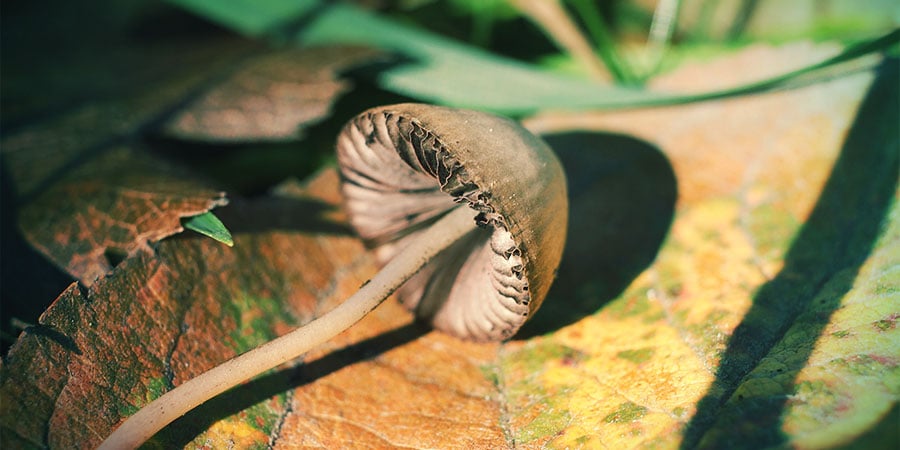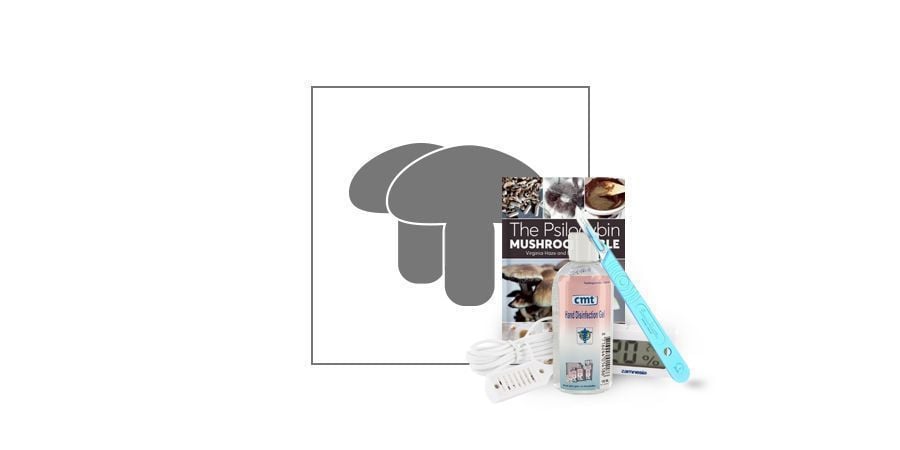
Magic Mushroom Hunting: A Field Guide
Thinking of joining a mushroom hunting group? Well we have put together a basic guide to hunting mushrooms, ensuring you have the ground knowledge in place.
The countryside is a mushroom hunter’s wonderland. Magic mushrooms grow wild all over the place, just waiting to be found by a discerning eye. However, distinguishing magic mushrooms from others, which are potentially dangerous, is a tricky business.
For most, one mushroom looks the same as the other, so as you can imagine, the risk of wrongly identifying a mushroom puts many people off hunting their own magic supply. In order to be successful, proper planning, knowledge, and ultimately, patience, are required. The following guide will hopefully go some way to meet these needs.
A WORD TO THE WISE
As already stated, mushroom hunting can be dangerous. Some species of mushroom contain compounds that can be seriously damaging to health, even causing organ failure and death. As such, the following guide should only be used as a theoretical foundation for those interested in hunting magic mushrooms.
If you are serious about it, we highly recommend joining a wild mushroom hunting course or group – obviously don’t tell them your end goal is hunting the magic variety. This will help build up contacts within the hunting community, as well as give you guided practical experience in hunting the many varieties of safe to eat mushrooms - expanding your knowledge that can eventually be used to hunt magic mushrooms.
Also, the laws regarding mushroom hunting vary from country to country, especially regarding fresh mushrooms that contain psilocybin. So make sure you are aware of the legal situation in your area, and adhere to it.
Zamnesia is not responsible for any result that comes from the misuse of this theoretical guide.
MAGIC MUSHROOM HUNTING: THE BASICS
Now that we have suitable warned you, let’s start laying down some knowledge. Firstly, identifying an exact strain of mushrooms can be extremely challenging, even for a veteran mushroom hunter. As such, most novices tend to focus on a genus of mushrooms.
A genus is a group of species that all share the same characteristics. For example, the magic mushrooms genus Psilocybe. By being able of identify a genus, a novice has a good chance of finding what they want, without poisoning themselves. From there, they can build their knowledge further.
Identifying the genus of a mushroom consists of two main tasks. The first is to identify its physical traits, followed by analysing its spore print characteristics. A mushroom book can be very handy as a reference for this, both when you are hunting and taking prints.
When To Start Looking
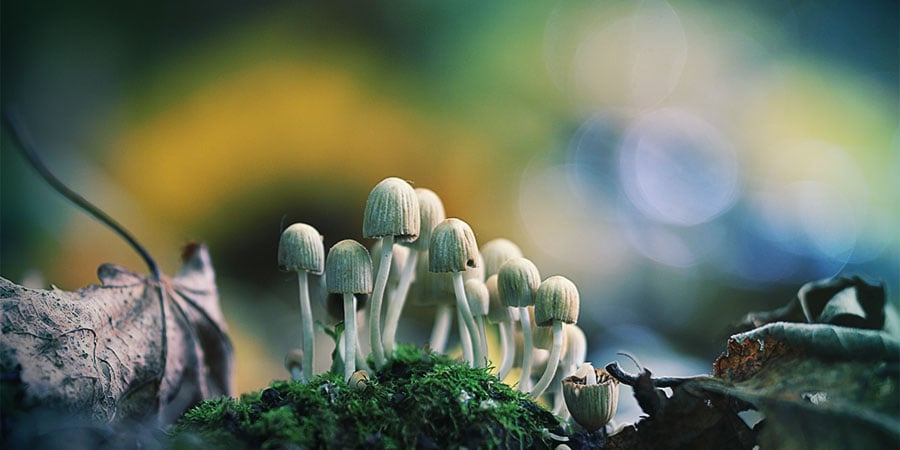
The best time to look for magic mushrooms is during the damp, cool season of autumn, as opposed to spring. This is because the hotter, dryer nature of summer tends to push magic mushroom mycelium into overdrive, causing them to spread their underground networks. When the damper conditions of autumn roll around, the magic mushroom mycelium is in a position to fruit with a powerful vengeance – making them much more abundant and easier to find. You can find mushrooms whenever conditions are consistently damp, but it is the damp after the summer that is true mushroom season.
Location, Location, Location
There is not much point simply rocking up at your local forest and hoping to find some magic mushrooms – you are very likely to end up disappointed and exhausted. In order to successfully hunt magic mushrooms, you need to know what kind of habitat they grow in.
For example, certain species of the Psilocybe genus prefer damp fields, such as those with cow dung in them, whilst others of the same genus like to grow on rotting logs. By picking a few specific mushrooms to hunt, and getting to know where they grow, hunting can be much more focused. It is much better than simply rambling and seeing what you come across.
Up Close Observations
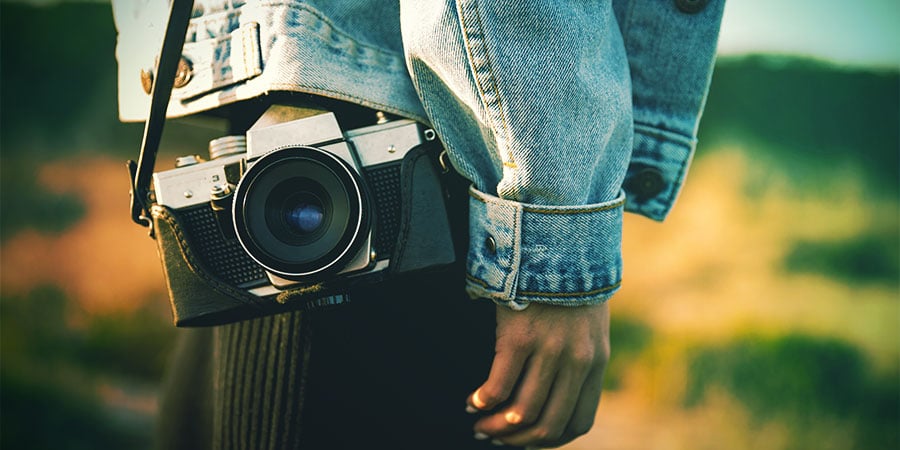
Once you think you have managed to find the magic mushroom you are hunting, it is time to start noting its physical traits. Do the mushrooms grow in clumps with a joined base, or individually? How big are they? What’s thier texture? Are they slimy or dry? Brittle or tough? Can you see gills under the cap? Are they packed it tightly or loosely? What do the stem and cap look like? What colour do they bruise where they have been damaged?
These are all important questions when identifying a mushroom, and questions that even veterans can struggle to be 100% confident answering. This is why the next step, taking a spore print, is so important. Never assume that identifying a mushroom by sight is good enough.
However, saying this, if you are struggling with the basics of physical identification, taking some photos can be extremely handy. Be sure to take photos of the mushroom growing in its environment, as well as close ups of its features. These can then be uploaded to online mushroom forums, where veterans can weigh in.
Once again, this does not mean spore prints can be bypassed, but it can help give a general idea of what you are looking at if you are completely unsure. Also, whilst the internet is a great resource, take the advice of strangers with a healthy degree of scepticism - the people online owe you nothing, and will have varying degrees of knowledge themselves.
Checking The Spore Print
The next phase is to identify the spore print of the mushrooms you have found. This is by far the most important phase, but should never be done without first analysing the physical attributes of the mushroom.
To take a spore print, take a mushroom, cut the cap away from the stem using a sharp knife, and place it gills down on a piece of paper. If the mushroom you have been hunting is known to have white or a light print, then use some black paper.
Leave the cap alone for around 30-60 minutes. After this time, remove the cap. You should be left with a visible print. The characteristics of a spore print are usually enough to identify a genus by eye, especially when combined with an analysis of the mushroom’s physical features. To identify a specific strain or species, you will likely need a microscope, and in-depth knowledge.
Spore prints can also be taken in a sterile environment for long term storage. This can be handy should you wish to show the print to someone else for a second opinion. It can also be useful should you wish to grow your own culture of the mushroom for further reference and analysis, as spore syringes can be made from sterile prints.
View Accessories & Grow Supplies
DANGEROUS MUSHROOMS
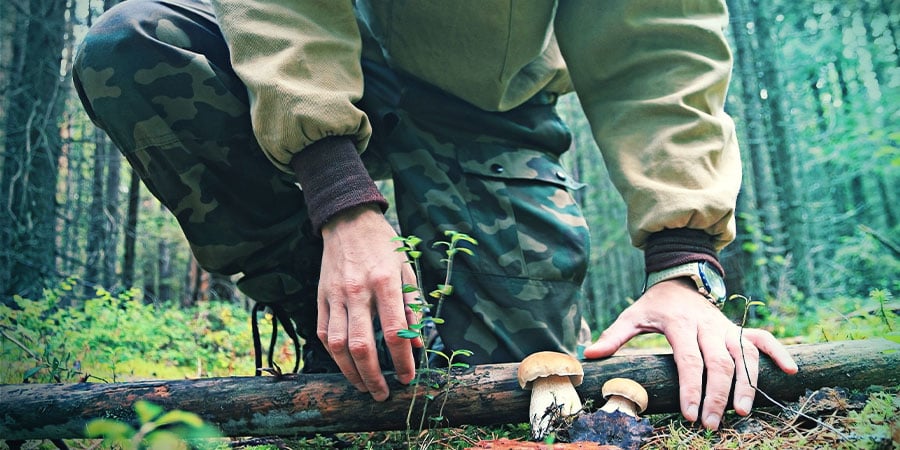
There are literally thousands of different types of mushrooms out there, and of the many, only a few hundred are thought to be poisonous, with a few dozen being deadly. That being said, any mushroom hunter, whether normal or magic, should take great caution. Whilst there are a relatively small amount that are actually poisonous, they are out there, and some of them are common. Mushroom poisoning is never pleasant, and can put you off what is otherwise a very fun, rewarding, and active hobby!
Just remember, this basic framework for mushroom hunting is meant to be used as a theoretical foundation for use as an academic interest, or as part of joining an experienced and professional hunting group who will be able to properly guide and expand your knowledge.
The key is to read up and learning the characteristics of a genus inside and out; from there, the only way is up. Hunting mushrooms without the over-watch of a veteran is risky, and done at your own peril. Happy (potential) hunting! May your harvest be bountiful, and more importantly, potent!
-
 5 min
29 July 2024
How To Store Magic Mushrooms
If you want your shrooms to stand the test of time, then you'll need to not only dry them properly, but store them adequately too. While not difficult, it is important to get this right if you want...
5 min
29 July 2024
How To Store Magic Mushrooms
If you want your shrooms to stand the test of time, then you'll need to not only dry them properly, but store them adequately too. While not difficult, it is important to get this right if you want...
-
 3 min
9 February 2023
How To Make Magic Mushroom Chocolate
Magic mushrooms are fantastic, but they don't necessarily taste good. Well, you can change that by combining them with chocolate! Read on to discover how to make your own magic mushroom chocolate...
3 min
9 February 2023
How To Make Magic Mushroom Chocolate
Magic mushrooms are fantastic, but they don't necessarily taste good. Well, you can change that by combining them with chocolate! Read on to discover how to make your own magic mushroom chocolate...
-
 6 min
26 January 2023
Can You Mix Weed And Magic Mushrooms?
People often mix cannabis and shrooms together; however, the outcome doesn't always go to plan. Here we compare the two substances, and ask how best to mix them, and whether it's recommended to do...
6 min
26 January 2023
Can You Mix Weed And Magic Mushrooms?
People often mix cannabis and shrooms together; however, the outcome doesn't always go to plan. Here we compare the two substances, and ask how best to mix them, and whether it's recommended to do...
-
 5 min
26 April 2022
How To Harvest Magic Mushrooms
Now the time has come to harvest your magic mushrooms, you're almost there. Mastering this stage is fairly simple, but crucial if you want to reap the rewards of all your hard work. Find out how...
5 min
26 April 2022
How To Harvest Magic Mushrooms
Now the time has come to harvest your magic mushrooms, you're almost there. Mastering this stage is fairly simple, but crucial if you want to reap the rewards of all your hard work. Find out how...
-
 4 min
18 September 2020
Magic Truffles vs Magic Mushrooms: Who will win?
Magic truffles and shrooms are different yet similar. Both can serve the same purpose, but there are differences between the two that mean one may suit you more than the other. Find out more below.
4 min
18 September 2020
Magic Truffles vs Magic Mushrooms: Who will win?
Magic truffles and shrooms are different yet similar. Both can serve the same purpose, but there are differences between the two that mean one may suit you more than the other. Find out more below.
-
 3 min
29 October 2019
Magic Mushrooms Are The Safest Drug
A psilocybin trip can be fun and enlightening, but just how safe is it to trip on magic mushrooms? In this article, we’ll take a deep dive into the world of magic mushrooms, and show you just how...
3 min
29 October 2019
Magic Mushrooms Are The Safest Drug
A psilocybin trip can be fun and enlightening, but just how safe is it to trip on magic mushrooms? In this article, we’ll take a deep dive into the world of magic mushrooms, and show you just how...
-
 3 min
25 August 2018
Grow Magic Mushrooms With Our Outdoor Cultivation Kit
Take the uncertainty of preparing, growing, and harvesting magic mushrooms away. With a step-by-step guide and a quality cultivation kit, you can develop your very own outdoor magic mushroom patch!
3 min
25 August 2018
Grow Magic Mushrooms With Our Outdoor Cultivation Kit
Take the uncertainty of preparing, growing, and harvesting magic mushrooms away. With a step-by-step guide and a quality cultivation kit, you can develop your very own outdoor magic mushroom patch!
-
 4 min
5 February 2018
The Most Famous Psilocybin Mushrooms
Magic mushrooms are mostly known for inducing psychedelic experiences, but did you know that there are actually benefits to ingesting psilocybin, the most abundant psychoactive substance in...
4 min
5 February 2018
The Most Famous Psilocybin Mushrooms
Magic mushrooms are mostly known for inducing psychedelic experiences, but did you know that there are actually benefits to ingesting psilocybin, the most abundant psychoactive substance in...
-
 4 min
24 November 2017
How To Identify Different Types Of Magic Mushrooms
Looking for help identifying your favourite magic mushrooms? In this article, we take a look at the most common types of shrooms that you can encounter.
4 min
24 November 2017
How To Identify Different Types Of Magic Mushrooms
Looking for help identifying your favourite magic mushrooms? In this article, we take a look at the most common types of shrooms that you can encounter.





 United States
United States

